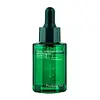What's inside
What's inside
 Key Ingredients
Key Ingredients

 Benefits
Benefits

 Concerns
Concerns

 Ingredients Side-by-side
Ingredients Side-by-side

Water
Skin ConditioningGlycerin
HumectantMethylpropanediol
SolventPhellodendron Amurense Bark Extract
Skin ConditioningPaeonia Lactiflora Bark/Sap Extract
Skin ConditioningScutellaria Baicalensis Root Extract
AstringentMentha Arvensis Extract
MaskingButylene Glycol
HumectantDipropylene Glycol
HumectantBetaine
HumectantHydroxyacetophenone
AntioxidantAcrylates/C10-30 Alkyl Acrylate Crosspolymer
Emulsion StabilisingArginine
Masking1,2-Hexanediol
Skin ConditioningXanthan Gum
EmulsifyingCitric Acid
BufferingPEG-60 Hydrogenated Castor Oil
EmulsifyingEthylhexylglycerin
Skin ConditioningCitrus Aurantium Dulcis Peel Oil
MaskingCitrus Aurantium Bergamia Fruit Oil
MaskingPelargonium Graveolens Oil
MaskingAllantoin
Skin ConditioningGluconolactone
Skin ConditioningMentha Piperita Oil
MaskingSqualane
EmollientButyrospermum Parkii Butter
Skin ConditioningLonicera Japonica Flower Extract
Skin ConditioningCaprylic/Capric Triglyceride
MaskingCeramide NP
Skin ConditioningAdansonia Digitata Seed Oil
EmollientHydrogenated Lecithin
EmulsifyingPentylene Glycol
Skin ConditioningMelaleuca Alternifolia Leaf Extract
PerfumingSodium Hyaluronate
HumectantTocopherol
AntioxidantCaprylyl Glycol
EmollientSodium Hyaluronate Crosspolymer
HumectantCeramide Ns
Skin ConditioningCeramide As
Skin ConditioningHydrolyzed Hyaluronic Acid
HumectantCentella Asiatica Extract
CleansingCeramide EOP
Skin ConditioningCeramide AP
Skin ConditioningHyaluronic Acid
HumectantHydrolyzed Sodium Hyaluronate
Skin ConditioningMadecassoside
AntioxidantMadecassic Acid
Skin ConditioningAsiaticoside
AntioxidantAsiatic Acid
Skin ConditioningLimonene
PerfumingCitronellol
PerfumingLinalool
PerfumingGeraniol
PerfumingWater, Glycerin, Methylpropanediol, Phellodendron Amurense Bark Extract, Paeonia Lactiflora Bark/Sap Extract, Scutellaria Baicalensis Root Extract, Mentha Arvensis Extract, Butylene Glycol, Dipropylene Glycol, Betaine, Hydroxyacetophenone, Acrylates/C10-30 Alkyl Acrylate Crosspolymer, Arginine, 1,2-Hexanediol, Xanthan Gum, Citric Acid, PEG-60 Hydrogenated Castor Oil, Ethylhexylglycerin, Citrus Aurantium Dulcis Peel Oil, Citrus Aurantium Bergamia Fruit Oil, Pelargonium Graveolens Oil, Allantoin, Gluconolactone, Mentha Piperita Oil, Squalane, Butyrospermum Parkii Butter, Lonicera Japonica Flower Extract, Caprylic/Capric Triglyceride, Ceramide NP, Adansonia Digitata Seed Oil, Hydrogenated Lecithin, Pentylene Glycol, Melaleuca Alternifolia Leaf Extract, Sodium Hyaluronate, Tocopherol, Caprylyl Glycol, Sodium Hyaluronate Crosspolymer, Ceramide Ns, Ceramide As, Hydrolyzed Hyaluronic Acid, Centella Asiatica Extract, Ceramide EOP, Ceramide AP, Hyaluronic Acid, Hydrolyzed Sodium Hyaluronate, Madecassoside, Madecassic Acid, Asiaticoside, Asiatic Acid, Limonene, Citronellol, Linalool, Geraniol
 Reviews
Reviews

Ingredients Explained
These ingredients are found in both products.
Ingredients higher up in an ingredient list are typically present in a larger amount.
Hyaluronic acid is naturally found in healthy skin. It is a humectant, meaning it draws moisture to your skin.
This ingredient helps hydrate, soothe, and protect the skin.
What makes hyaluronic acid so hydrating? It has the capacity to bind or hold large amounts of water.
Fun fact: It is already naturally found in our bodies, such as the fluids of our eyes and our joints.
Studies find this ingredient to have anti-inflammatory and anti-microbial properties. This can help speed up wound-healing.
Hyaluronic acid can be irritating if the molecule has a low-molecular weight, or if the molecules are small.
One study found low-molecular weight hyaluronic acid to be pro-inflammatory, meaning some people may experience irritation. This is because our bodies use hyaluronic acid in the wound-healing process to signal to our bodies, via irritation, that something needs healing.
The same study found high-molecular weight hyaluronic acid to be anti-inflammatory.
These are some other common types of Hyaluronic Acid:
Learn more about Hyaluronic AcidWater. It's the most common cosmetic ingredient of all. You'll usually see it at the top of ingredient lists, meaning that it makes up the largest part of the product.
So why is it so popular? Water most often acts as a solvent - this means that it helps dissolve other ingredients into the formulation.
You'll also recognize water as that liquid we all need to stay alive. If you see this, drink a glass of water. Stay hydrated!
Learn more about Water